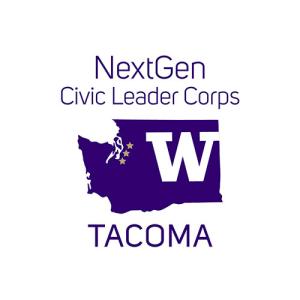Japanese nuclear bomb survivors plead for worldwide disarmament
A group of more than 40 Japanese delegates, will present a forum and install a Peace Pole at UW Tacoma.
Visitors to UW Tacoma campus will plant a Peace Pole
A group of more than 40 Japanese delegates, including a survivor of the nuclear bombing of Hiroshima, will be featured in a forum on the non-proliferation of nuclear weapons at 12:30 p.m., May 6, in Philip Hall at the University of Washington Tacoma.
The Japanese delegation's visit to Tacoma will include a formal welcome at city hall, small group discussions with UW Tacoma students and a ceremony to set a Peace Pole on the UW Tacoma campus.
Peace Poles, a tradition begun in 1955 by Japanese Masahisa Goi, have been planted around the world. The handmade monument will read, "May Peace Prevail on Earth" in four languages — English, Japanese, Spanish and Lushootseed, the language of Salish Native-Americans.
UW Tacoma faculty and community leaders will join representatives of the delegation from Japan in a panel discussion. Co-sponsors of the UW Tacoma forum include UW Tacoma, Veterans for Peace and Tacoma Catholic Workers. The event is free and open to the public.
The Japanese group, called the Japan Council Against Atomic and Hydrogen Bombs (Gensuikyo), will stop in Tacoma after participating in the 2010 Review Conference of the Parties to the Treaty on the Non-Proliferation of Nuclear Weapons (NPT) at the United Nations in New York.
The NPT is a landmark international treaty. Its objective is to prevent the spread of nuclear weapons and weapons technology, to promote cooperation in the peaceful uses of nuclear energy and to further the goal of achieving nuclear disarmament. The NPT represents the only binding commitment in a multilateral treaty meant to forward disarmament of countries with nuclear weapons.
Signed by 187 parties, including the five nuclear-weapon countries, more countries have ratified the NPT than any other arms-limitation and disarmament agreement. The NPT became effective in 1970 and is reviewed every five years.
The United States dropped the first nuclear bomb on Hiroshima in 1945, instantly killing an estimated 70,000 people. The nuclear bomb, named "Little Boy," destroyed two-thirds of the city. An additional estimated 70,000 people later died from burns and radiation sickness. Most of the victims were civilians. Three days later a larger nuclear bomb, "Fat Man," was dropped on Nagasaki, killing an additional estimated 40,000 people the first day, and twice that in the months to come. The bomb destroyed 40 percent of the city and ended World War II in the Pacific.
For more information on the forum and Peace Pole ceremony, contact Sharon Parker, assistant chancellor for Equity and Diversity, at parker07@uw.edu or 253-692-4861.



